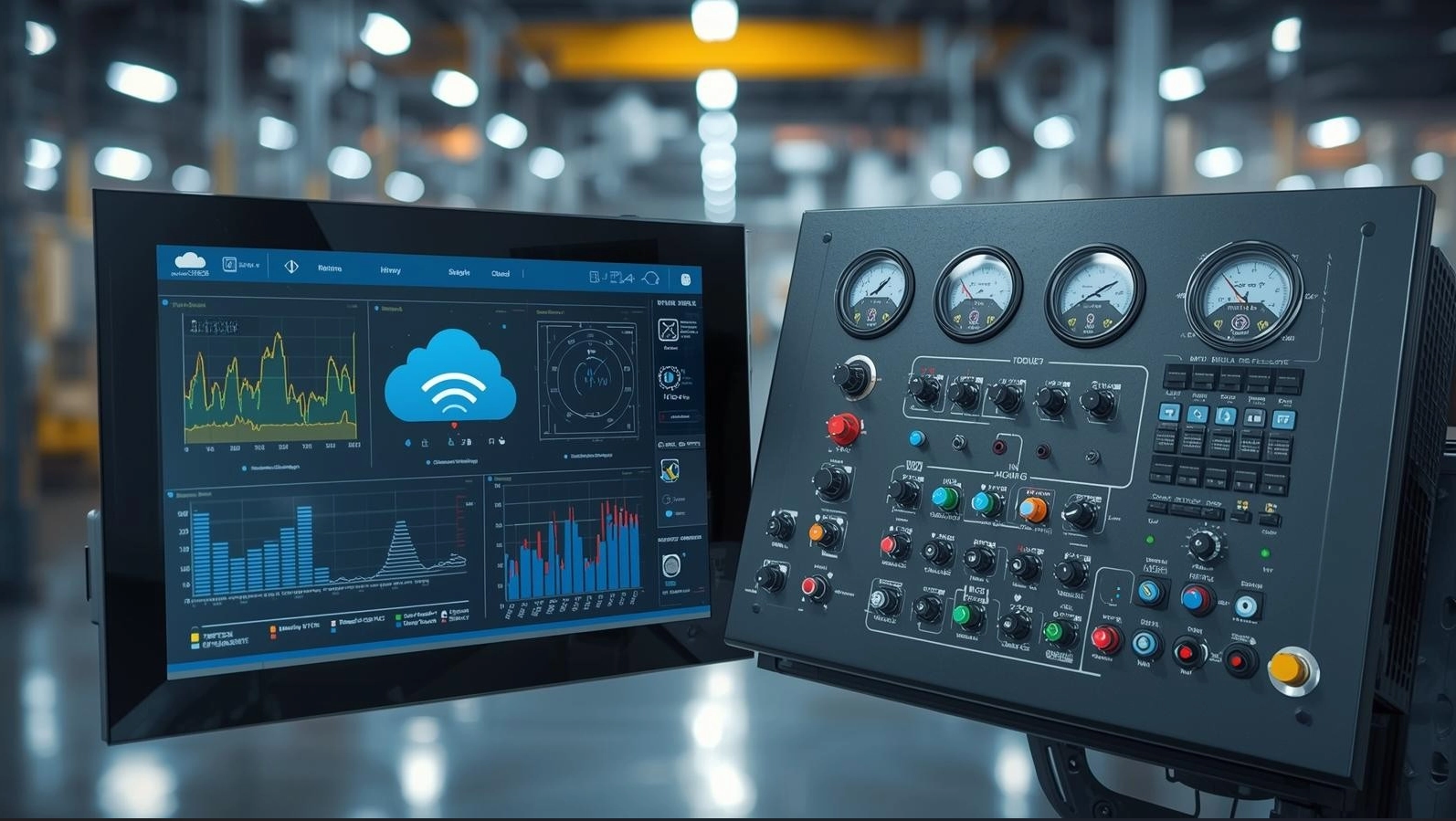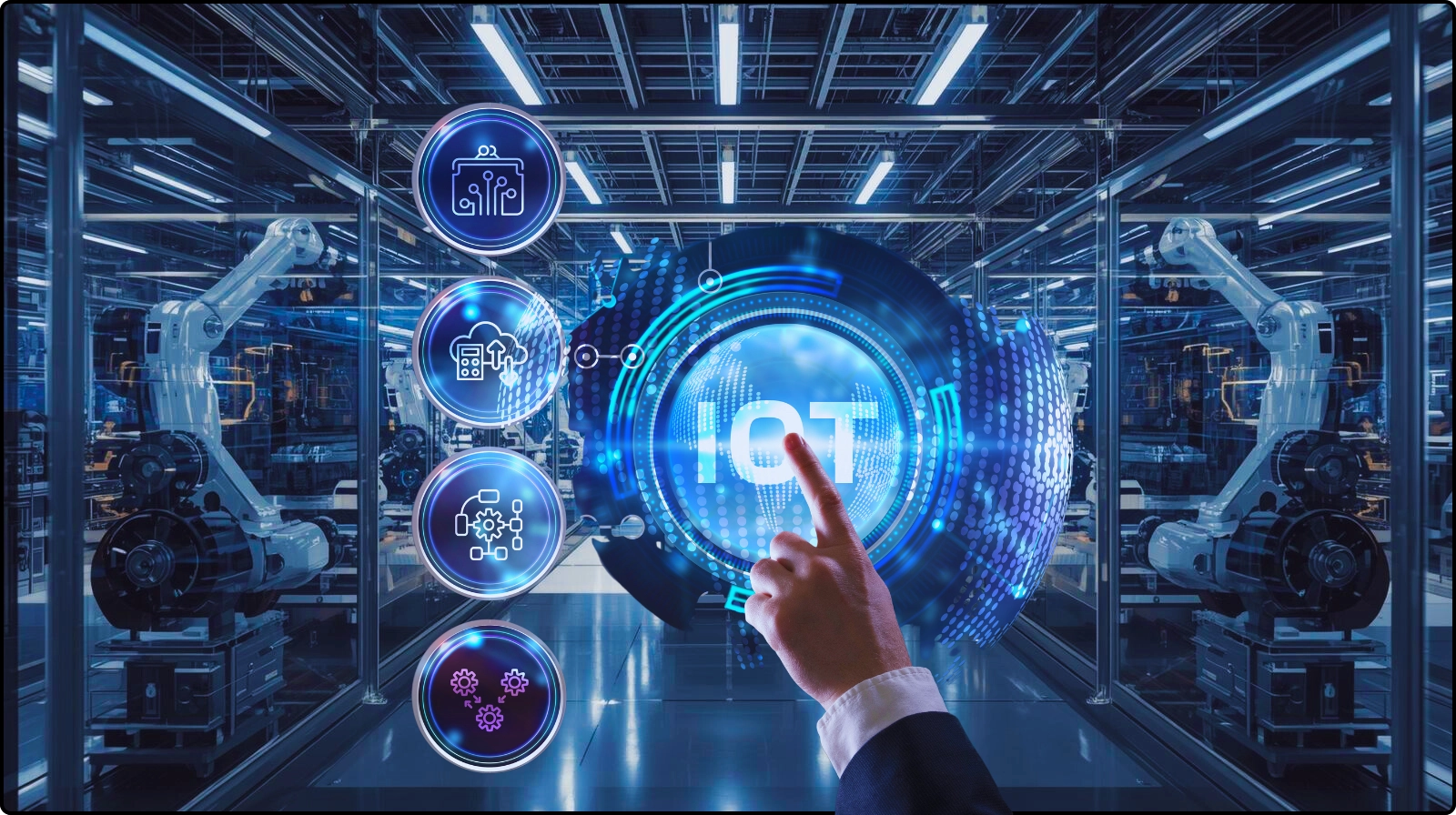Introduction
As Industry 4.0 reshapes global manufacturing, businesses are increasingly exploring smarter automation technologies to enhance efficiency and reduce costs. One of the most critical shifts is the transition from traditional control systems to Industrial IoT (IIoT) Control Panels. This article compares these two control architectures and highlights the significant advantages IIoT panels bring to modern industrial operations.
Evolution of Industrial Control Systems
Traditional PLC and Relay-Based Controls
Traditional control systems rely on Programmable Logic Controllers (PLCs), relay circuits, and hardwired connections. While reliable and time-tested, they lack flexibility and are typically isolated from broader network infrastructures. Maintenance often involves physical inspection and manual troubleshooting, which can be time-consuming.
Emergence of IIoT Control Panels
Industrial IoT Control Panels incorporate advanced technologies such as edge computing, real-time data analytics, and cloud integration. These panels offer smarter monitoring and control capabilities that align with the demands of modern smart factories, where production must be adaptable, data-driven, and responsive.
Shift Towards Smart Manufacturing
With the adoption of sensors, HMI interfaces, and interconnected devices, IIoT Control Panels are at the heart of smart manufacturing—enabling real-time visibility, adaptive operations, and predictive maintenance. Industries like automotive, electronics, and food processing are early adopters, leveraging IIoT for competitive advantages.
Functional and Technological Comparison
Data Processing and Acquisition
Traditional systems offer limited data collection, mostly for on-site diagnostics. In contrast, IIoT panels continuously gather, store, and analyze large volumes of data from multiple sensors and devices. This empowers factory managers with real-time insights into performance, efficiency, and machine health.
Communication Protocols and Integration
IIoT panels support modern protocols such as MQTT, OPC UA, and Modbus TCP/IP. These allow seamless communication with MES, ERP, SCADA, and cloud platforms. Integration with business systems is vital for process optimization and end-to-end traceability.
Scalability and Flexibility
Unlike fixed-function traditional systems, IIoT panels are modular and scalable. New devices or subsystems can be integrated easily without disrupting ongoing operations. This makes them suitable for both brownfield upgrades and greenfield projects.
User Interface and Operational Efficiency
Enhanced HMI Interfaces
IIoT control panels feature intuitive touchscreens with customizable dashboards. These interfaces reduce the learning curve, improve situational awareness, and speed up decision-making. Operators can access system data in real-time and perform adjustments with ease.
Mobile and Remote Access
Users can monitor and control systems remotely using tablets, smartphones, or laptops. Remote diagnostics reduce travel time for engineers and ensure faster responses to issues—critical for global operations and multi-site enterprises.
Data Visualization
With advanced graphics, trend charts, and KPI dashboards, IIoT panels turn raw data into actionable insights. For example, machine vibration data can be visualized to detect anomalies early, helping prevent unexpected downtime.
Security and Maintenance
Cybersecurity Features
Traditional systems are more vulnerable to threats due to lack of encryption and network segmentation. IIoT panels incorporate firewalls, VPNs, two-factor authentication, and encrypted communication to enhance cybersecurity and comply with international standards such as IEC 62443.
Predictive Maintenance Capabilities
Thanks to real-time monitoring and AI-driven analytics, IIoT systems can predict equipment failures before they happen. This minimizes unplanned downtime and extends the lifecycle of machinery through proactive servicing.
Easy Software Updates
IIoT panels support over-the-air (OTA) software and firmware updates. This allows manufacturers to roll out patches and new features remotely without halting production—a significant advantage over traditional systems requiring manual upgrades.
Cost-Benefit and Implementation Considerations
Initial Investment vs Long-Term ROI
While IIoT panels may have higher upfront costs due to advanced hardware and integration, they offer significant ROI through reduced downtime, improved asset utilization, and lower energy consumption. Studies show that smart automation can improve operational efficiency by up to 30%.
Integration Costs and Training
Legacy systems often require extensive rewiring and programming for upgrades. IIoT solutions are easier to integrate and come with user-friendly interfaces, reducing training time and dependency on highly specialized technicians.
Industry Suitability
IIoT control panels are ideal for sectors such as smart manufacturing, energy, logistics, food processing, and pharmaceuticals—industries that benefit from real-time monitoring, automation, and traceability.
Frequently Asked Questions (FAQ)
Can an IIoT Control Panel replace my existing PLC system?
Yes, most IIoT panels are designed to be backward compatible and can gradually replace or integrate with your existing PLC infrastructure. Hybrid integration is often used during transitions.
Is IIoT technology suitable for small factories?
Absolutely. IIoT solutions can scale according to operational needs, making them a cost-effective choice for both SMEs and large enterprises. Cloud-based models reduce the need for on-premise servers.
How secure are IIoT Control Panels?
Modern IIoT panels incorporate strong cybersecurity measures such as end-to-end encryption, role-based access control, intrusion detection systems, and regular firmware updates. These features help protect against internal and external threats.
How long does it take to implement an IIoT panel system?
Depending on the complexity of integration and system size, implementation can range from a few weeks to several months. Pre-configured templates and modular design can accelerate deployment.
Beyond Info System: Smart Panel Solutions
Advanced Industrial IoT Panels
Beyond Info System offers rugged, high-performance IIoT control panels built to withstand industrial environments while delivering seamless connectivity and intelligent control. Our panels are IP65-rated and support wide temperature ranges for factory and outdoor use.
Customization and Industry Applications
Our solutions are tailored to specific industry needs—ranging from manufacturing automation and energy monitoring to utilities and transportation. We support both standard and custom I/O configurations, along with multi-protocol support.
Explore Our Products
Visit www.beyondinfosys.com to learn more about our full range of smart panel solutions, including product specifications, downloadable datasheets, and integration services. Contact us for a free consultation and see how our IIoT solutions can elevate your operations.



